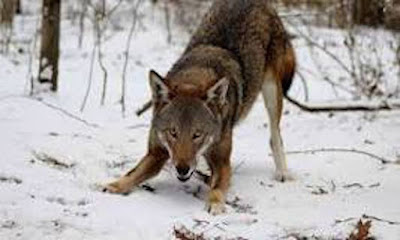I was out in the woods about a week ago and I heard a familiar sound high overhead, the call of wild geese. There are not a lot of people who hear specklebelly geese and recognize the fact that they are not snow geese or Canada’s. But specklebellies almost never stop over in the Ozarks. They pass over way up high in V formations, headed for northern Canada prairies where they nest.
In October they will come back, sailing toward Louisiana on a north wind. I have never hunted them except in Louisiana, but they come into decoys well, and they are as good to eat as mallards. I am going back to hunt them again this fall if I can. Greater numbers of those geese are found in the pacific flyway, where hunters kill a quarter million of them each fall.
Specklebellies are also known as White-front geese, and few know how they got that name. Look at the photo of them on my blogspot and see if you can figure it out. Answer at the end of this column. The photo and many others can be seen on the internet, click on www.larrydablemontoutdoors.
Rummaging through hundreds of old photos of my grandfather, I found a photo of him with an 80-pound red wolf he trapped in the 1930’s. They were once plentiful in the Ozarks of Missouri, and Arkansas, but the last one I know of was killed in northwest Arkansas in 1973. But wildlife authorities think there are about 20 of them in the Ouachita Mountains of Arkansas and Louisiana and Texas. But I suspect there are also a few in the mountains of eastern Oklahoma.
service have red collars on ten of them and so they are not yet extinct. Some red wolf males are over 100 pounds in weight, but few will go more than 85 pounds. They do not interbreed with coyotes but females will cross with large dogs. When my grandfather caught that stock killer along the Big Piney, there were perhaps a few thousand Red Wolves. I heard them howl when I was young and their howl is very similar to the howl of the timber wolves I have heard in Canada. It is nothing close to the howl of coyotes.
I think Ozarkians might really like the story and photos of my grandfather that will be in my spring magazine. I wrote about predictions he made when we camped in Big Piney caves and put in some photos going back to 1910. I thought he was crazy back then, but now I am seeing them come to pass. To get a copy of that new magazine, call Gloria at 417-777-5227.
When I first started my magazines, the Lightning Ridge Outdoor Journal and eventually the Lightning Ridge Journal of the Ozarks, we had a huge number of subscribers. Today, most of the folks who loved reading them are passed on, and it seems a new generation has little interest. That is part of the reason our last issue will be coming out in the fall. BUT—we have a hundred back issues and readers who will miss it can get some of those back issues and be able to read great stories for years to come. Those back issues, all of them, can be seen on the internet at larrydablemont.com. If you would like anything on our web site, contact our office. We can provide cheaper prices. Some of those have been sold out, but not many. We even have dozens of copies of the very first outdoor journal from about 25 years ago. In keeping with the way my dad did things when selling an old car or johnboat, “We are asking ten dollars apiece for those old magazines,but would take half that!”
In the future I will just write newspaper columns that are free for any newspaper wanting to use them. At present there are about 40 papers in Missouri, Arkansas and Kansas which use these. But if you want to see the wildlife and outdoor photos I take each week you will have to go to that website I gave above, larrydablemontoutdoors. And frankly, if your newspaper doesn’t use all the columns, (some are too controversial) go to that site to read them.
Right now I am so excited about that Big Piney Museum we are building south of Houston Mo that I can hardly contain myself. I just go out and do cartwheels on a regular basis. More about it and the people helping make it a reality in a future column. Lots of progress recently.
Write to me at Box 22, Bolivar, Mo. 65613 or email me at lightninridge47@ gmail.com
P.S. White front geese got that name from the white patches right behind the bill.






